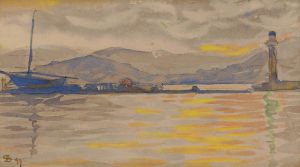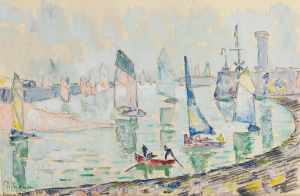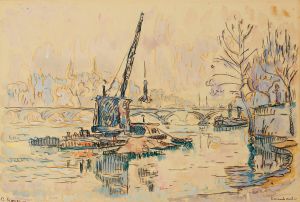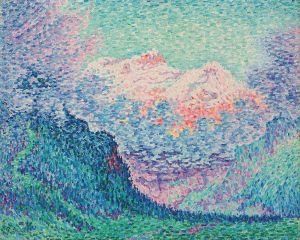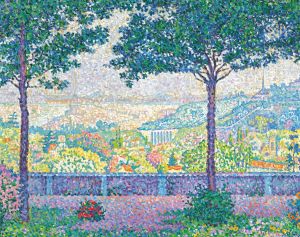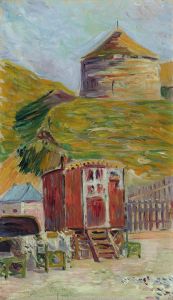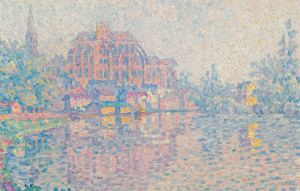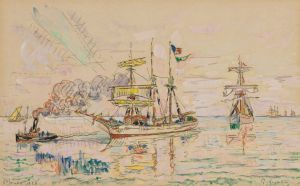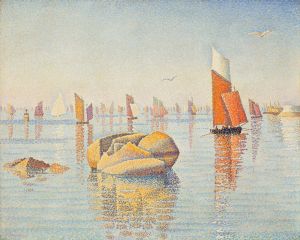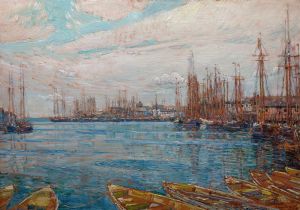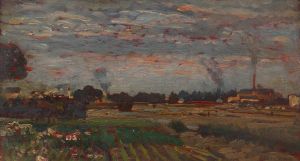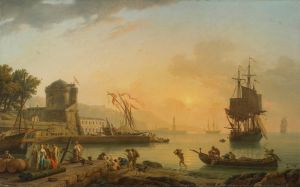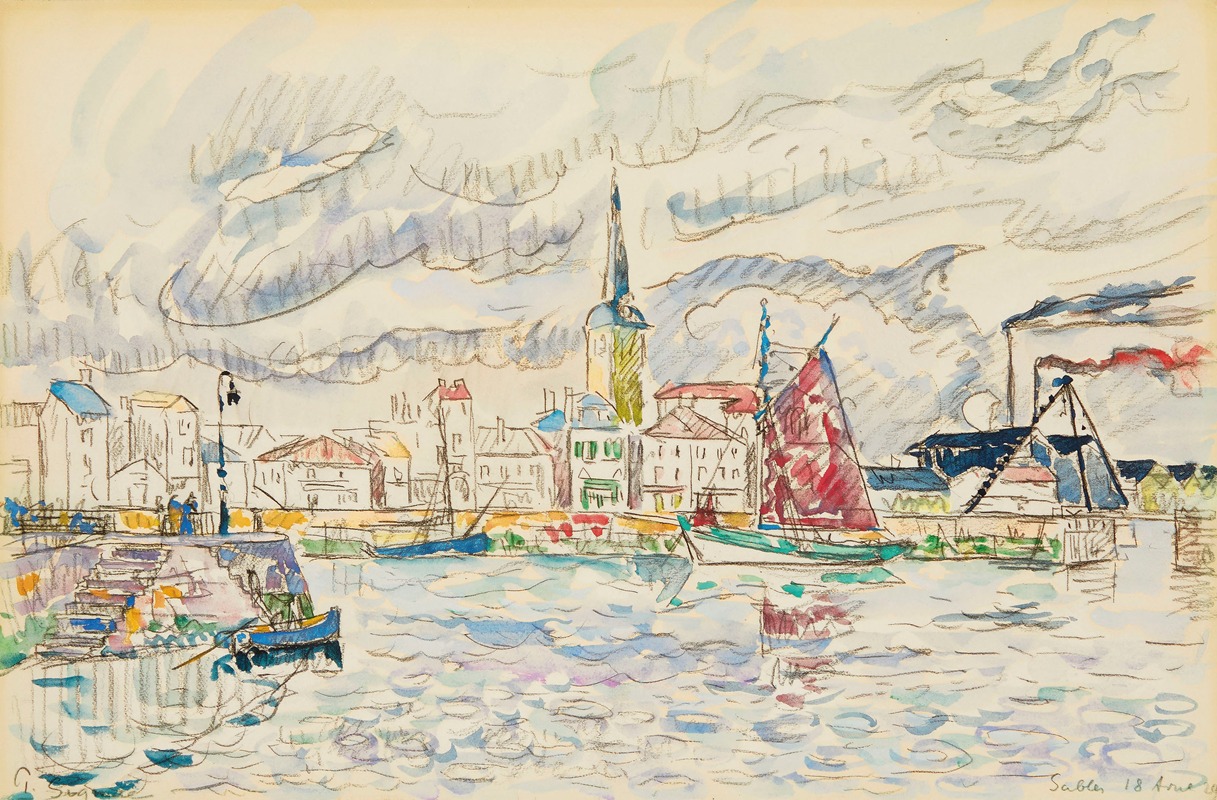
Les Sables–d’Olonne
A hand-painted replica of Paul Signac’s masterpiece Les Sables–d’Olonne, meticulously crafted by professional artists to capture the true essence of the original. Each piece is created with museum-quality canvas and rare mineral pigments, carefully painted by experienced artists with delicate brushstrokes and rich, layered colors to perfectly recreate the texture of the original artwork. Unlike machine-printed reproductions, this hand-painted version brings the painting to life, infused with the artist’s emotions and skill in every stroke. Whether for personal collection or home decoration, it instantly elevates the artistic atmosphere of any space.
Paul Signac's painting "Les Sables–d’Olonne" is a notable work by the French Neo-Impressionist artist, known for his innovative use of color and technique. Signac, born in 1863, was a leading figure in the development of the Pointillist style, a technique characterized by the application of small, distinct dots of color that are applied in patterns to form an image. This method was developed alongside Georges Seurat, with whom Signac shared a close professional relationship.
"Les Sables–d’Olonne" captures the essence of the coastal town of Les Sables-d'Olonne, located on the western coast of France. This town, known for its picturesque beaches and vibrant maritime activity, provided a rich source of inspiration for Signac. The painting reflects his fascination with the interplay of light and water, a recurring theme in his work. Signac's interest in capturing the effects of light on water surfaces is evident in the way he meticulously applies color to convey the shimmering quality of the sea and the atmosphere of the coastal environment.
Signac's approach to painting was heavily influenced by scientific theories of color and perception. He believed that colors could be mixed optically rather than physically, allowing the viewer's eye to blend the colors when viewed from a distance. This technique is evident in "Les Sables–d’Olonne," where the juxtaposition of complementary colors creates a vibrant and dynamic scene. The painting exemplifies Signac's commitment to the principles of Neo-Impressionism, which sought to bring a greater sense of harmony and luminosity to the canvas.
Throughout his career, Signac was deeply inspired by the natural world and the changing qualities of light. His travels along the French coast and throughout the Mediterranean provided ample material for his artistic explorations. "Les Sables–d’Olonne" is one of many works that demonstrate his ability to capture the unique character of a location through his distinctive style. The painting not only reflects the physical attributes of the town but also conveys a sense of tranquility and the leisurely pace of life by the sea.
In addition to his contributions to painting, Signac was an influential figure in the art world through his writings and advocacy for the Neo-Impressionist movement. He authored several texts that articulated the theoretical underpinnings of the style and championed the work of his contemporaries. His dedication to the advancement of Neo-Impressionism helped to secure its place in the history of modern art.
"Les Sables–d’Olonne" remains an important example of Signac's work and is celebrated for its technical precision and aesthetic beauty. The painting is a testament to Signac's skill in capturing the essence of a place through color and form, and it continues to be appreciated by art enthusiasts and scholars alike. Signac's legacy as a pioneer of Neo-Impressionism endures, and his works, including "Les Sables–d’Olonne," continue to be studied and admired for their innovative approach to color and composition.






